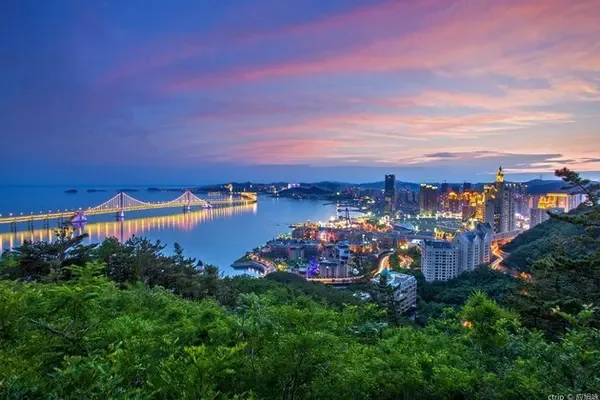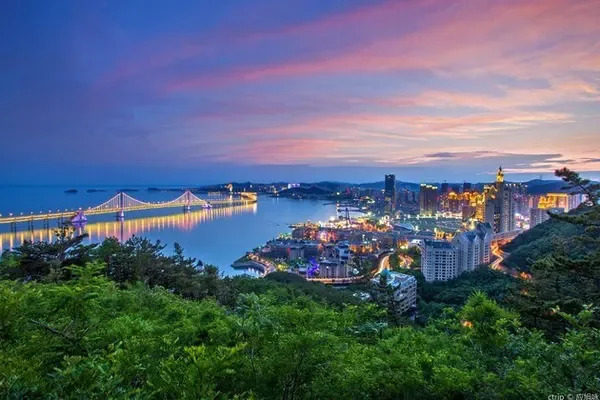If one day you come to Xinjiang, you don’t need to see the lake in Kanas, or set foot on the grasslands of Ili, but you must not miss the most Muslim city in China—Kashgar. As the saying goes, "If you don't go to Kashgar, you don't count as Xinjiang", and if you don't go to the old city, you don't count as Kashgar. The photo was taken in Kashgar Old Town Scenic Area.
On October 20, 2020, we visited the old city scenic spot of Kashgar. Kashgar Old City Scenic Spot is located in the center of Kashgar, with a total area of 3.6 square kilometers. The scenic spot covers 18 sightseeing spots such as the core area of the old city, the Id Kah Mosque, and Gaotai folk houses, among which the old city is the largest existing adobe building in the world. It is one of the group, with criss-crossing streets and alleys and high and low buildings. It is the only well-preserved labyrinth city block in China. The picture shows the guide map of Kashgar Old City Scenic Area.
Kashgar Old City Scenic Spot is the capital of the ancient Shule Kingdom, one of the thirty-six countries in the Western Regions more than 2,000 years ago. There are many profound historical and cultural relics left here. Streets, Uyghur folk houses, Jiulongquan, etc. are tourist attractions that integrate Uyghur history, culture, architecture, and folk customs, and are also one of the most famous tourist attractions in Kashgar and even Xinjiang. The photo was taken in Kashgar Old Town Scenic Area.
The old city of Kashgar is roughly centered on the Id Kah Mosque. It is an irregularly shaped urban area. The length and width of the urban area are about 2 kilometers. There are many streets and alleys in the old city, you can stroll freely, take sightseeing and take pictures along the way, it takes about half a day. The photo was taken in Kashgar Old Town Scenic Area.
Most of the buildings in the old city are full of Islamic and Uighur style, and the streets are criss-crossed and uniform in style, which is very suitable for taking pictures. Tourists walk among them, as if they have stepped into the exotic land of Central Asia, which feels very magical. The photo was taken in Kashgar Old Town Scenic Area.
The main lanes of the old city are very wide, which is due to the transformation of the old city implemented by the country. Residents of the old city bid farewell to the history of "garbage is blown by the wind, sewage is evaporated, water pipes are hung on the wall, and the roof is climbed when relieved". A total of 220,000 people have benefited. Since then, the ancient city of Kashgar has undergone a beautiful transformation. The picture shows the streets of the old city after renovation.
Now it is not only the living area of the residents, but also continues the traditional bazaar culture. The innovative transformation mode has preserved the historical authenticity and integrity of the ancient city of Kashgar to the greatest extent. Walking in it is like being in a vivid picture of folk customs in the Western Regions. The picture shows the old city buildings after renovation.
Here you can see yellow earth and brick walls, with round arches, colorful doors and windows and other characteristic decorations, which are very beautiful.
In addition to tasteful architecture, many characteristic shops on the streets of the old city are also what many tourists will visit. The picture shows an oil painting shop in the old city.
This is an antique shop in the old town
This is a harness shop in the old town
Almost every street in the old city has its own theme, named each Bazaar ("Bazaar" refers to the market, Uighur). Among them are Kantuman Bazaar (Blacksmith Street), Dopa Bazaar (Huamao Street), Flower Pot Bazaar, Handicraft Bazaar, Pottery Bazaar, etc., each with its own characteristics, and you can watch it along the way. The picture shows the sign of a thousand-year-old street.
There are also Islamic-style teahouses on the street, and vendors selling specialty snacks such as grapes, naan, and goat milk ice cream. You can also eat and shop while shopping, which is very pleasant. This is an old lady who sells naan.
This is an old man who sells naan.
This is a shop that sells baked buns
This is a lamb soup restaurant
The fish in the old city are fried and eaten.
On the streets of the old city, you can also see Uyghur grandpas relaxing in the sun and children playing, full of life, and the clothes and language of the local people are different from those in the mainland. Walking here feels like you have come to a foreign land, which is very magical. The picture shows a few Uighur uncles relaxing in the sun.
Here are some old city residents who are playing chess
It used to be the ruins of the royal palace of the Karahan Dynasty more than 1,200 years ago. Most of the people living here are the royal relatives and noble descendants of the Karahan Dynasty. I wonder if this old man who sells snacks in front of the old house is a descendant of aristocrats?
Strange natural scenery, rich ethnic customs, and splendid historical districts. The alleys of earth and stone pavement, the wider ones can walk on a donkey cart, and the narrower ones are difficult for two people to walk side by side; the longest streets are more than 600 meters, and the short ones are 50 meters to the end. The picture shows tourists taking pictures in an alley.
Vehicles are prohibited in the old town, except for bicycles.
Vehicles are prohibited in the old city, except for electric police cars.
The streets and alleys turn eastward and westward, southward and northward, with twists and turns, seemingly at the end of the road, but there is another alley, just like the Pantuo Road in Zhujiazhuang in "Water Margin". On both sides of the laneway are Uighur houses. The picture shows the Uighur houses in the alleys of the old city.
The streets and alleys in the ancient city are criss-crossed, and there are many shops on the street, selling hats, woodenware, naan cakes, jade... almost all the unique things in Xinjiang can be seen and bought here. This is a shop selling antiques.
This is a shop selling Xinjiang specialty food.
In a century-old teahouse in the scenic area of the ancient city of Kashgar, local residents danced to the music. In the century-old teahouse, people chat and drink tea comfortably, unload the fatigue of the day, and enjoy the leisurely slow time in the old city of Kashgar.
On the street opposite the old teahouse, there are small stalls filled with various melons and fruits. Kashgar's reputation as the "hometown of melons and fruits" has spread all over the world. On the side of the road, come to the "old man melon" that melts in your mouth and is sweet to the bone marrow, or squat in twos and threes by the side of the stall, guarding the basket of authentic Kashgar "soil peaches", you can eat more than a dozen in one breath, the taste is really good different.
These unique, sweet, delicious, and natural green fruits of various colors in Kashgar not only satisfy the tourists who have just arrived in Kashgar, but also make those Kashgar people who are far away from their homeland haunt their dreams.
Of course, the most distinctive thing is the people in the ancient city. Talent is the soul of a city. The residents of the city are almost all lovely Uighur brothers and sisters. The picture shows an old Uighur man selling dried fruits.
This is the tailor at work
This is the leisure old man and child in front of the antique shop
This is a child who sells duck eggs for adults
This is a man who sells tambourines
The ancient city is not ancient, and the mobile Internet is quietly changing this thousand-year-old city in the westernmost part of China. This is a Uighur child playing with a mobile phone.
I feel that the old city of Kashgar should be the place where the five-star red flag is hung most concentratedly in China. Most of the photos I took in the old city can see the national flag. The old man flies the national flag behind him.
This is an old street full of national flags
Early the next morning, I heard that there was still a "city opening ceremony", so we took the opportunity of passing by and stopped for a short time. After watching the whole process of entering the city, I feel that it is quite creative. Although the traces of commercialization are very obvious, I still want to praise the Kashgar people and their hard work.
The poet Zhou Tao once said, "Kashgar is incomprehensible. You can see through the viscera of other cities at a glance, but you can never see through Kashgar's confused eyes. There is something deeper in Kashgar, a more elegant, noble, Something more ancient, that kind of thing can't be pinpointed, but it exists all the time and everywhere, permeating and making you feel as if it is permeating in the air."
On July 20, 2015, the National Tourism Administration officially awarded the title of National 5A Tourist Attraction to the Kashgar Old City Scenic Spot. The picture shows a sculpture in the old city of Kashgar.
Looking back on the past, through the thick city walls, my thoughts traveled back to more than 2,000 years ago. In the wind and smoke of history, I seem to see Zhang Qian’s difficulty in digging out the Western Regions, Ban Chao’s eternal swan song in regaining the Western Regions, Xuanzang’s lonely and resolute back when he went to the west to learn Buddhist scriptures, and Marco Polo’s prosperous scene when he traveled to Kashgar. Times have changed, and today, history has chosen Kashgar again. In the construction of the National Silk Road Economic Belt and the China-Pakistan Economic Corridor, Kashgar has taken on the historical task of revitalizing the New Silk Road, revitalizing the glory of the Silk Road, and reappearing the glory of the Silk Road. Just around the corner!


